Interactive - Refraction and Lenses
Explore the refraction of light at a boundary between two media with the Refraction Interactive. Launch the Least Time Principle Interactive and discover the fundamental law that explains why light refracts as it does when traveling between two locations on the opposite side of a boundary. Use the Optics Bench Interactive to explore the images formed by converging and diverging lenses. And be fascinated with the eye candy found in our Converging and Diverging Lens Image Formation animations.
Activities
Turn on your laser and shine it through air at the surface of water. Change the laser's angle and observe the effect. Swap out the water and replace it with oil or glass or diamond or ... . Switch to the other side of the boundary and observe the effect of laser light traveling from water to air. There's no end to what you can try with this Interactive ... without an expensive laser, without getting wet, and without having to buy any diamonds.
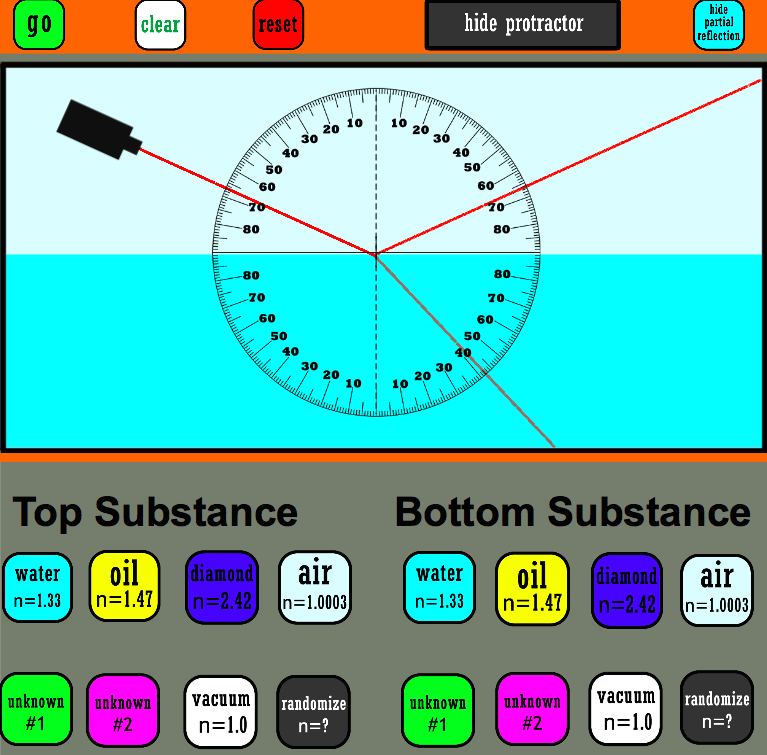
How light refracts and reflects when it passes through two mediums with different reflective indexes can be hard to calculate. This handy simulation let's you play with the ray angles and refractive indexes of two medium in order to see the reflection and refractions that occur.
Thanks to Physics teacher Martin Kirby for contributing this simulation to our Physics Interactives collection. You can learn more about the 3D Refraction Simulation simulation at Mr. Kirby's Google Site.
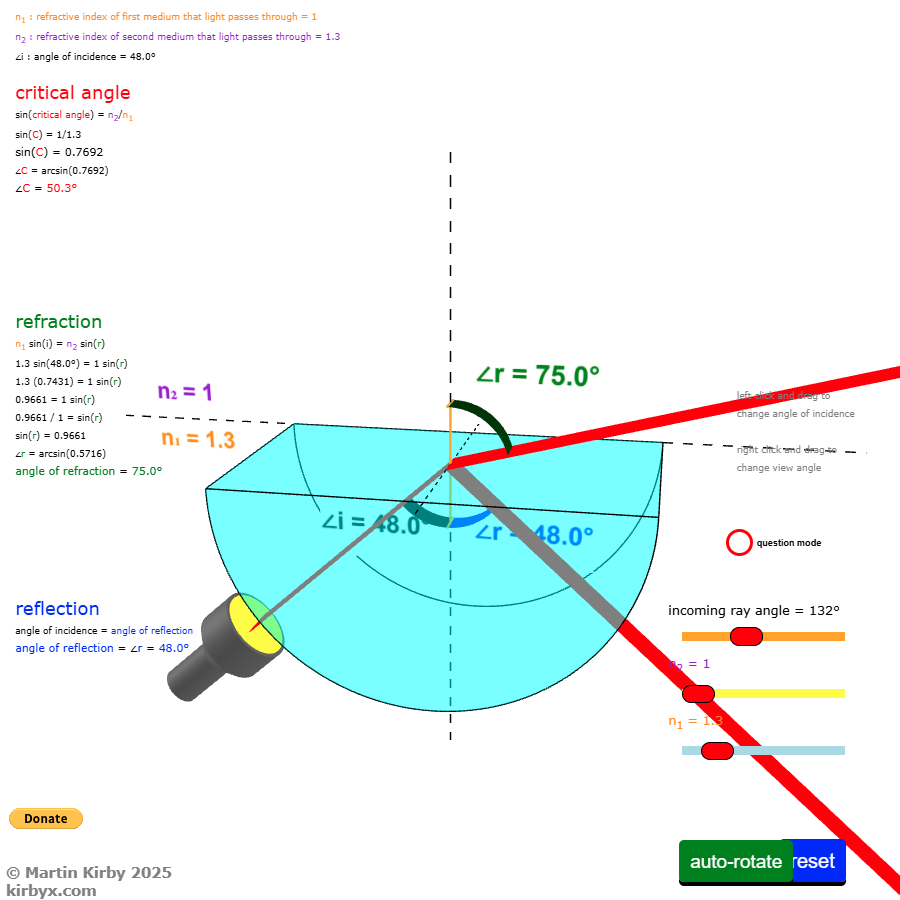
If you were a lifeguard at the beach and you saw a struggling swimmer in the water, it would be your objective to reach the swimmer in the least amount of time. But since you can run faster on the sand than you can swim in the water, you can't run directly at the swimmer. You can reduce your time by running a longer distance on the sand and swimming a shorter distance in the water. Your path to the swimmer will be a bent path - bent at the point where you transition from running to swimming. In this Interactive, learners will determine the entry point into the water that results in the least time. Then their analysis of the data will relate principle of least time to Snell's law of refraction. Now go save that swimmer ... in the least amount of time.
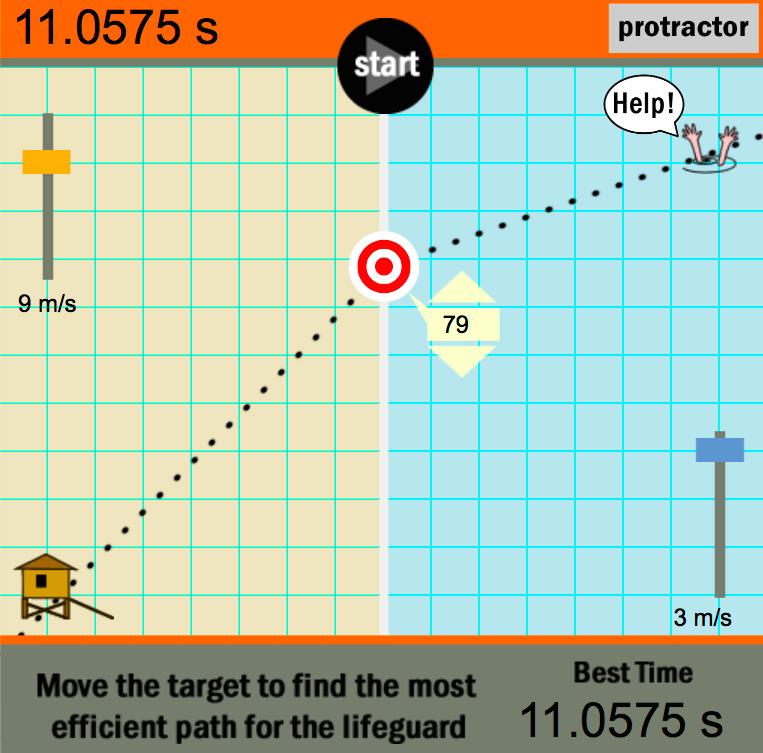
Many people are familiar with the odd image distortions created by a collection of fun house mirrors. But not everyone knows the physics that underlies the phun. In this Interactive, learners can drag a candle to various positions in front of a curved mirror and quickly observe the characteristics of the images that are formed. It's that simple; no dripping candle wax, no mess to clean up, just pure physics.
The Physics Classroom would like to thank Nerd Island Studios for contributing this Interactive to our collection.
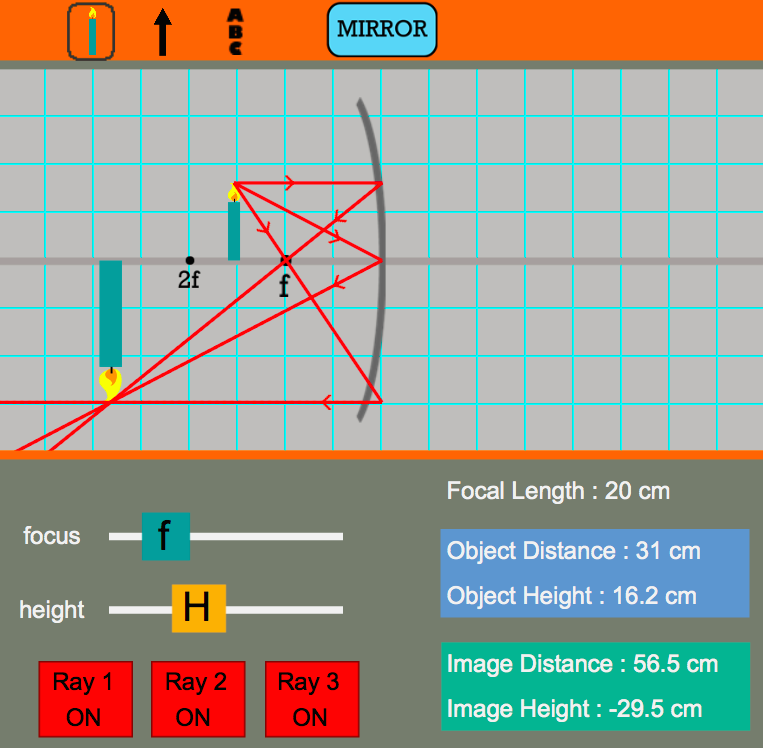
Refraction is amazing, but who has time to calculate all those ray paths and lines? Wouldn't it be cool to just see them, and get a feel for how things like height, distance, focal length and radius impact the image? Look no further than this 3D Ray Diagram simulator!
Thanks to Physics teacher Martin Kirby for contributing this simulation to our Physics Interactives collection. You can learn more about the 3D Ray Diagram Simulation simulation at Mr. Kirby's Google Site.
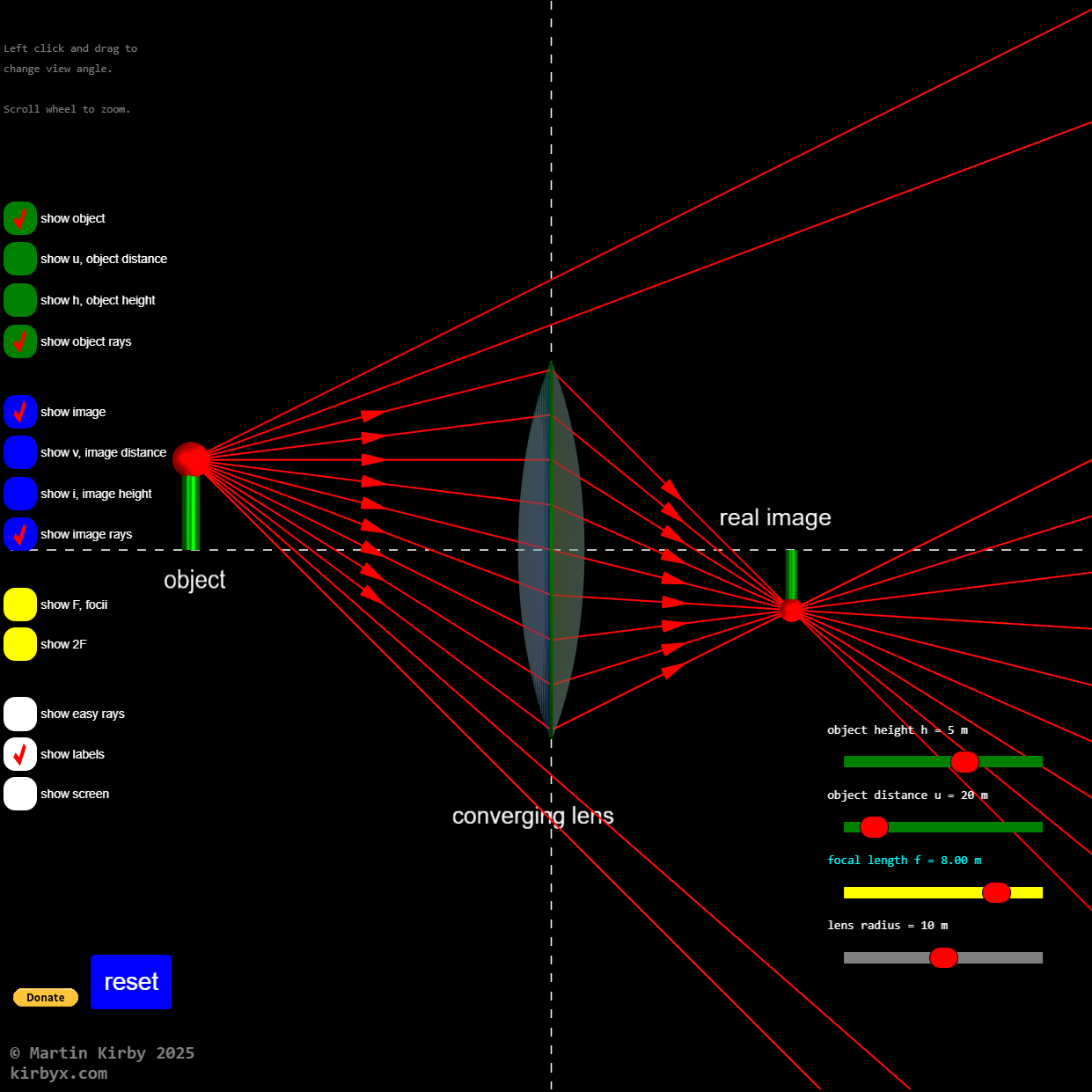
An image is formed by a lens when light from every point on the object intersects at a location in space.' That's nice theory, but it's a little difficult to get a mental grip on. But now that has changed with our Converging Lens Image Formation simulation. Tap the link and watch as our Interactive constructs the image of every point on an object using a rapidly-draw ray diagram. The process and the result will fascinate you. Tap the link and secure your grip on image formation.
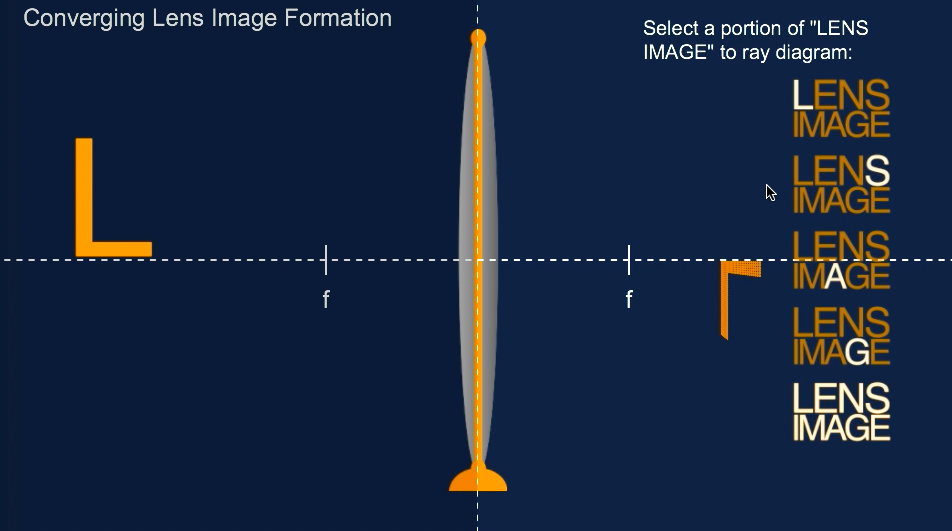
Find out how a diverging lens forms an image. Tap on a point on an object and view the light refracting and being traced backwards to an intersection point. Repeat for a variety of object locations and learn about image formation for diverging lenses.
